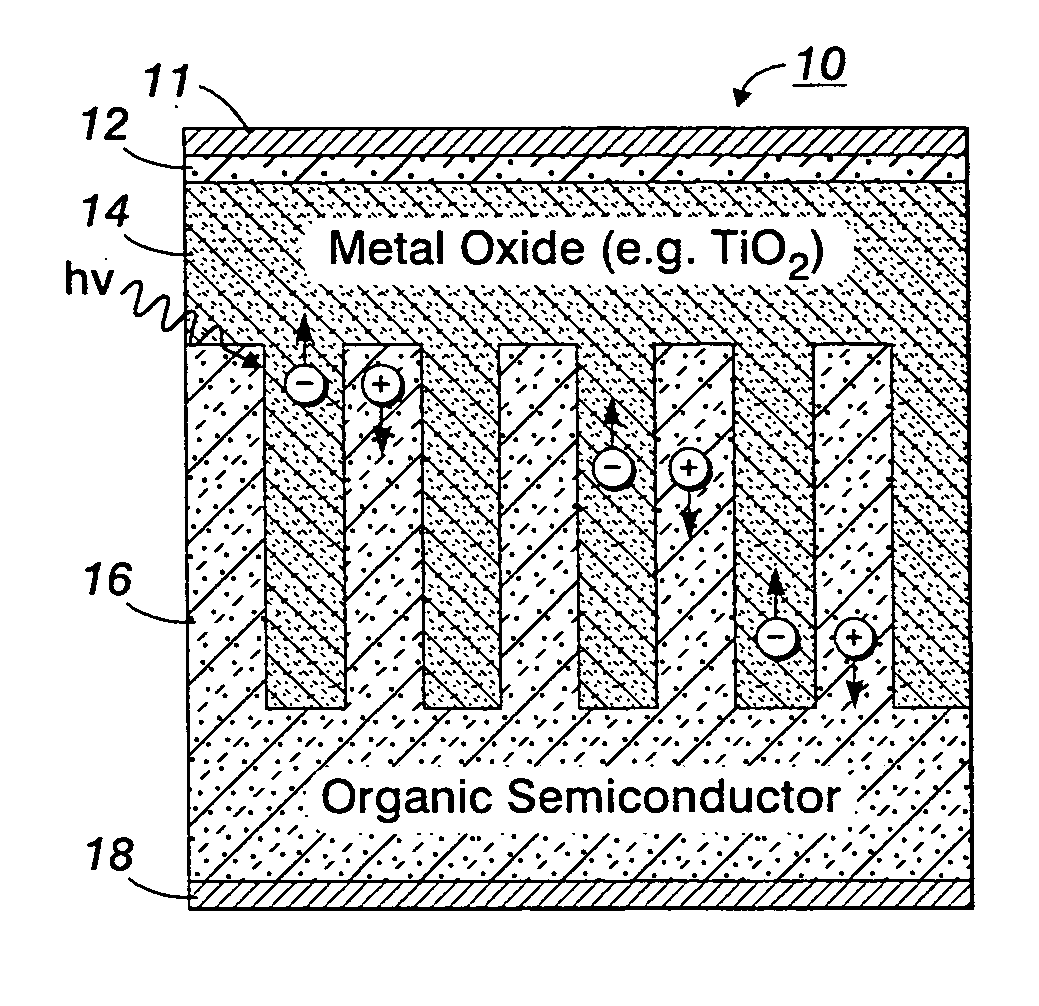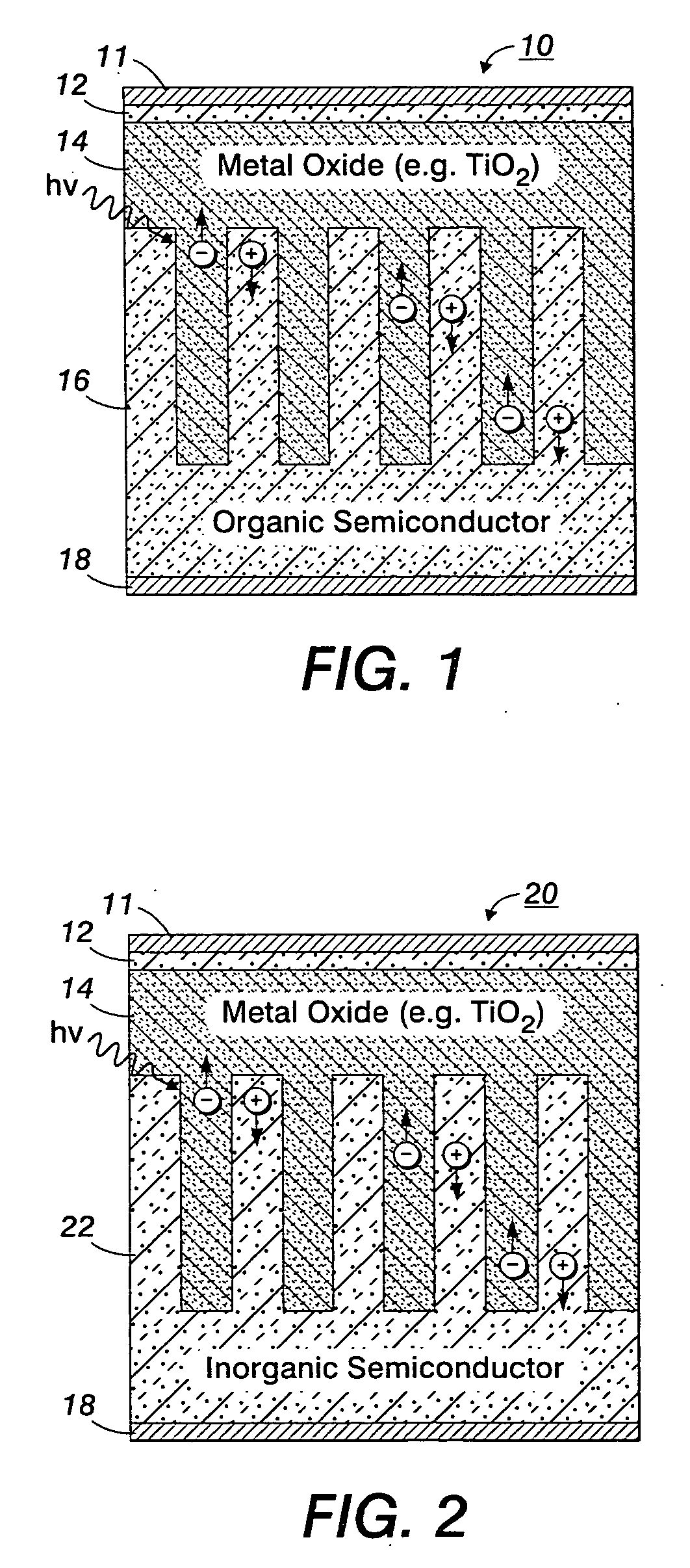Nanostructured composite photovoltaic cell
a composite photovoltaic cell and nanostructure technology, applied in nanoinformatics, sustainable manufacturing/processing, final product manufacturing, etc., can solve the problems of high cost, toxic materials, and poor mobilities of such materials
- Summary
- Abstract
- Description
- Claims
- Application Information
AI Technical Summary
Problems solved by technology
Method used
Image
Examples
Embodiment Construction
[0023] Referring to FIG. 1, a solar photovoltaic cell 10 is illustrated. The photovoltaic cell 10 includes an electrically conductive support formed of an optically transparent substrate 11 and transparent electrically conductive film 12.
[0024] The material used in the substrate 11 is not particularly limited and can be various kinds of transparent materials, and glass is preferably used.
[0025] The material used in the transparent electrically conductive film 12 is also not particularly limited, and it is preferred to use a transparent electrically conductive metallic oxide electrode such as fluorinated tin oxide (SnO2:F), antimony-doped tin oxide (SnO2:Sb), indium tin oxide (ITO), aluminum-doped zinc oxide (AnO:Al) and gallium-doped zinc oxide (ZnO:Ga). The preferred materials for the transparent electrically conductive film are ITO or fluorinated tin oxide.
[0026] Examples of the method for forming the transparent electrically conductive film 12 on the substrate 11 include a vac...
PUM
| Property | Measurement | Unit |
|---|---|---|
| diameter | aaaaa | aaaaa |
| temperatures | aaaaa | aaaaa |
| temperature | aaaaa | aaaaa |
Abstract
Description
Claims
Application Information
 Login to View More
Login to View More - R&D
- Intellectual Property
- Life Sciences
- Materials
- Tech Scout
- Unparalleled Data Quality
- Higher Quality Content
- 60% Fewer Hallucinations
Browse by: Latest US Patents, China's latest patents, Technical Efficacy Thesaurus, Application Domain, Technology Topic, Popular Technical Reports.
© 2025 PatSnap. All rights reserved.Legal|Privacy policy|Modern Slavery Act Transparency Statement|Sitemap|About US| Contact US: help@patsnap.com



